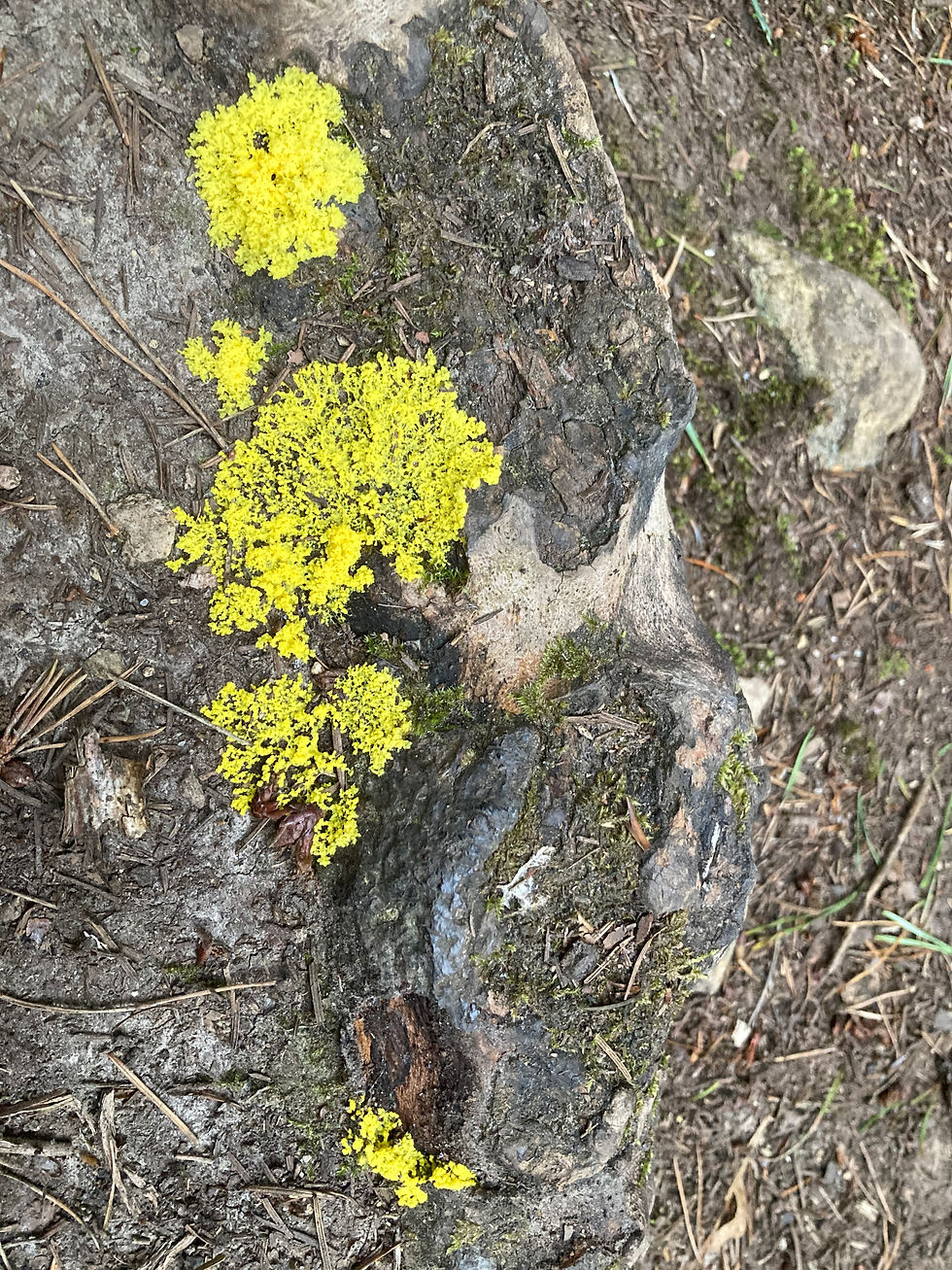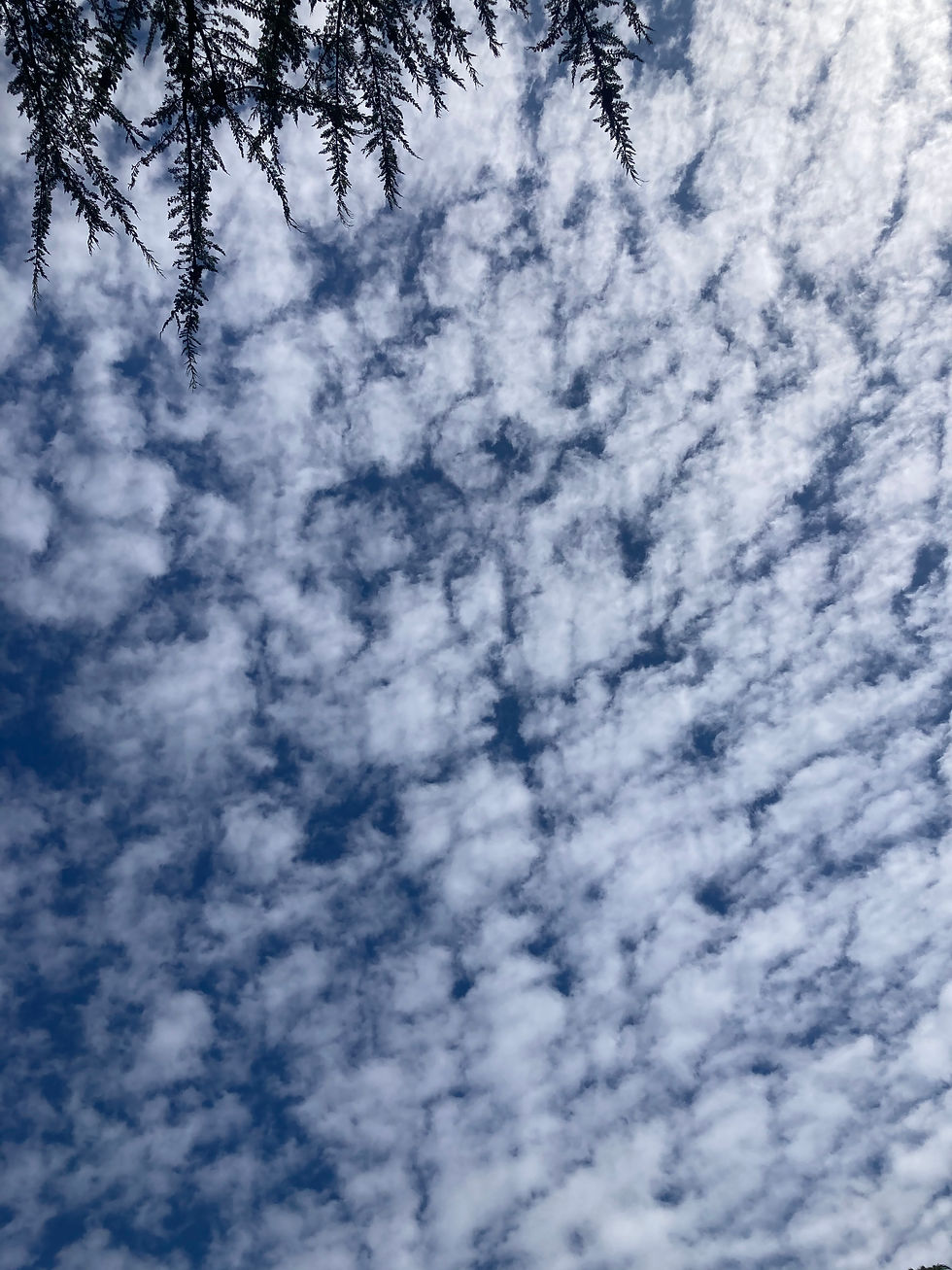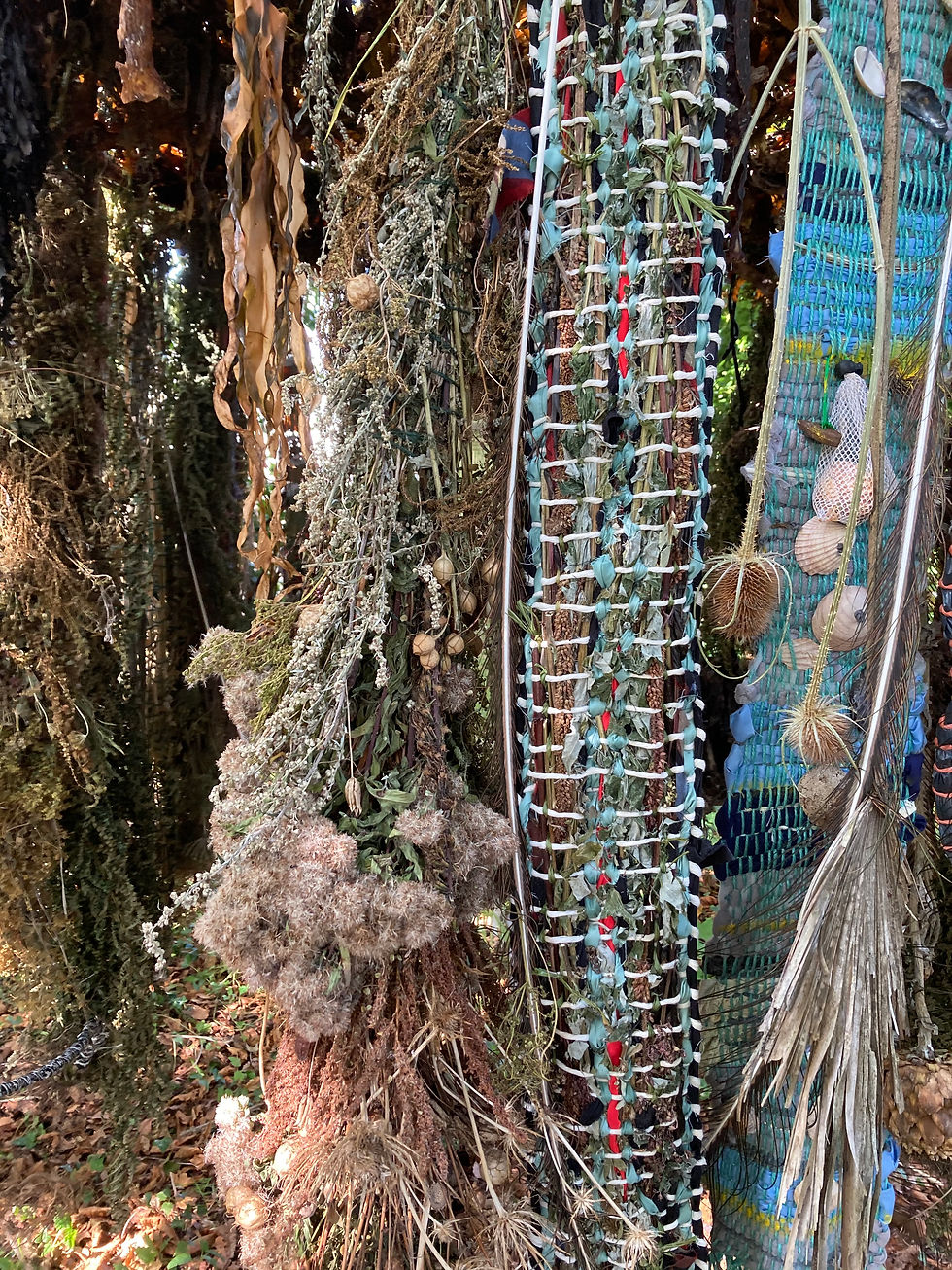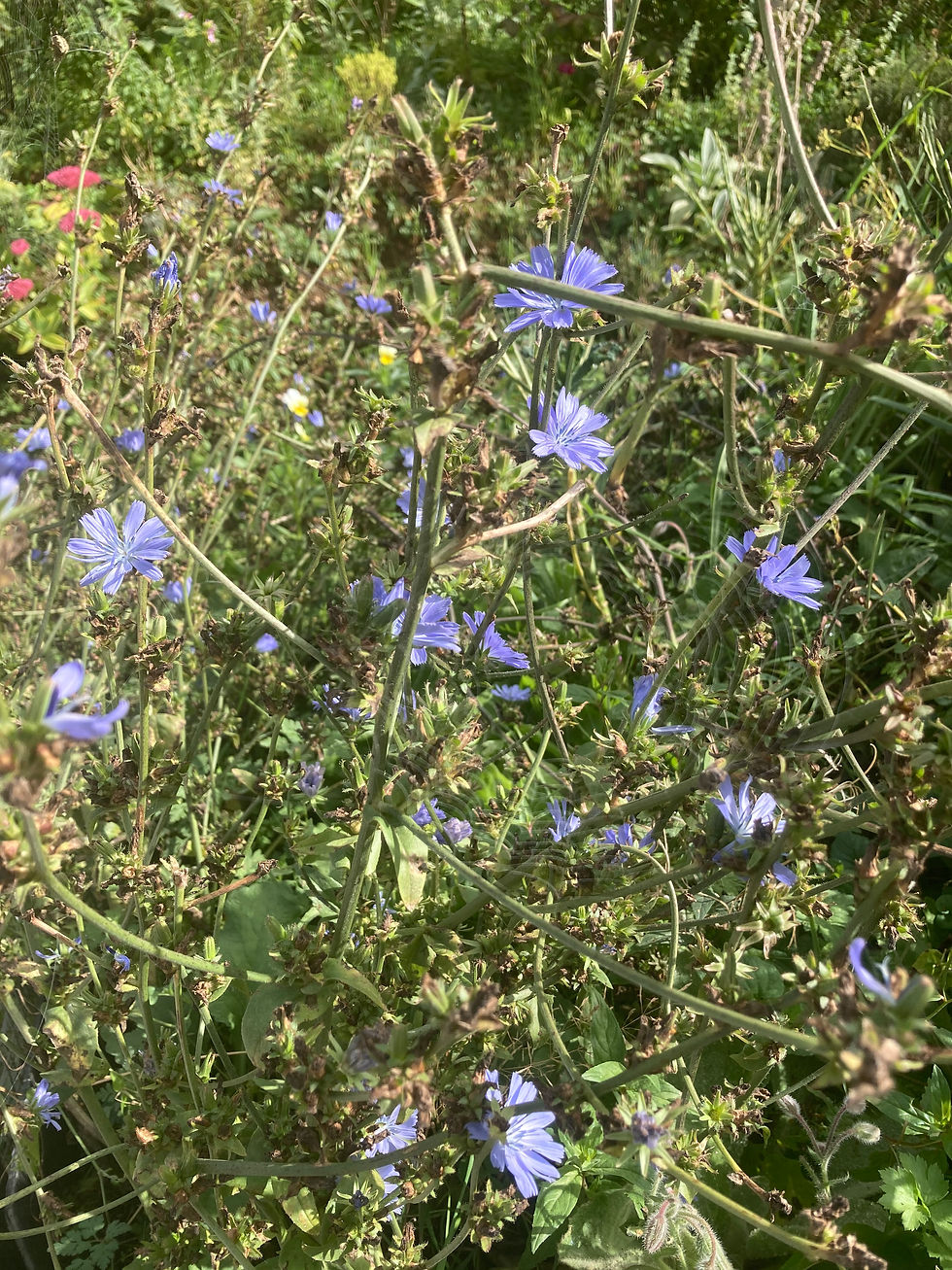Layers, Fields, and Commons
- Sophie Rieu
- Sep 30, 2023
- 14 min read
Updated: Oct 6, 2023
Once again, I asked a few of my Biodynamic Craniosacral Therapy (BCST) colleagues and teachers in the field to contribute to my meandering journeys into the depths of our work as it relates to the fields of life.
On this occasion the orienting midline of creative formation was my last blog post The Crucible and the Wandering Line in which I explored the role of BCST in re-making or restoring Relationship (to borrow Rollin Becker’s habit of placing capital letters in front of words to enhance their scope and essence) in the troubled and challenging times we live.
At least this is what the responses I gratefully received reflected back to me in various ways.
My previous blog post discussed how BCST wanders away from our dominant cultural and societal paradigm, to awaken us back to our “human nature” as Scott Zamurut(1) says. For indeed, “The dominant paradigm has wandered away from the natural world.”
So it explored a number of layers, each pertaining to “a variety of fields. (…) Primarily the field around the body and the relational field co-created between client and practitioner that creates the protected and negotiated space within which the session occurs. Ray Castellino and others have expanded this field concept to the concentric circles of our various relationships and influences, such as the family field, the ancestral field, the cultural field and on and on.” says Margaret Rosenau (2)
I particularly like this image, borrowed from this Pre and Perinatal pioneer, of embedded widening circles nestled into one another. Within these formative and informative fields, various “layers of support” (one of Ray Castellino's principles) line the cradle from which we make or shrink from relationship.
Susan Raffo (3) hones in on this intertwinement, “string theory and spiderwoman know the same thing, we are patterns that experience ourselves, that we are always connected...
(...) It helps me to remember that full aliveness, full embodiment is about connection - with ourselves, with the world of wildness and spirit, and with our kin. Connection with our kin is about those whose names we call with poetry and those who we avoid, who we are afraid of, don't understand, or don't see or don't want to engage with. All of this is the full relational field.”

All these fields, energetic as well as corporeal could also be called bodies. We speak of a body of work so why not extend this word to the cultural, artistic, ancestral, societal spheres?
I feel it helps to 'enliven' fields into the complex, metabolic, forever transforming containers they are. It also helps to encompass our bodies within the larger breathing collective body that is "the full relational field" to which Raffo refers. Indeed our bodies' aliveness interacts and evolves within a dynamic context, a space/time dimension, shaped and affected by a limitless number of influences, conditions. “Life is all about communication and relationship, and as that idea is followed further, it is absolutely inevitable that Life is BOTH never one but many, and never many but one (or to quote [Chilean biologist and philosopher Francisco] Varela, "not one, not two"). It's a mistake to think of the human body as a single entity. That idea (of an isolatable undivided human entity) removes it from the ecosystem that it requires to even exist; and also gives a very poor sense of the diversity and variability of the internal ecosystem - the collection of cells, biota, limbs, organs, and so on that intelligently cooperate with each other to make a viable and responsive organism," explains Andrew Cook (4).
(...) "In the Talmud there is a line that goes something like "beside every blade of grass is an angel that whispers 'Grow! Grow!'". If you then consider a clump of grass or a field or a savanna what happens to the angels? I believe that Varela's "not one, not two" answers that. If you look at something at one scale, you see an identity because the modern way of seeing is to id-entify and separate "things" into separateness-es. A small field of grass may be part of a bigger landscape - it has a separable field identity and is also part of something greater (and also has individual blades of grass). In the same way the body and the human being can be viewed in different contexts and different scales, each of which is true.”

What is life if not this constant enlisting of relationships experienced from our bodies hosting other bodies within the greater contextual historical collective body? BCST mediates a “conversation”(3) with this wildly dynamic Life, with an aliveness we share alongside many other kinds and kin. It invites and ignites an awareness of what Dan Siegel calls “Mwe” (Me+We), or "intraconnection" as a path towards integration, towards a dynamic relational whole. Tanya Desfontaines(5) writes that, “Throughout my ongoing journey with BCST I have been challenged as a therapist to ‘reverse the polarity’ of my conditioned way of operating, so that rather than observing, measuring and analysing information from the physiology of my client, processing it with logic and reasoning and then producing a plan for treatment, I have learned to hold a much more open, receptive space for the Intelligence of the Breath of Life to work through the field, through me, and through my hands in relationship with the body of the client. Thus the work happens from the inside out, rather than from the outside in.”
Returning to the body as the primer, the blueprint, the essence of being. “We begin our listening with an inherent rhythm, a natural rhythm. Our physical body is a respiratory system so we begin with the breath, “not the breath of air but the Breath of Life.” Our listening is not random, our listening is directed to the rhythms of primary respiration that we have learned to perceive by learning to synchronize our attention to specific rhythms.
In this quality of listening to inherent movement within a living body we can begin to see natural and aberrant motion, and through this witnessing the magic of inherent healing arises. Not because we conjure up a special state within ourselves or because we’ve learned a special theory of one kind or another. The magic of inherent healing comes about through listening to the natural activity of the Breath of Life.” (1)
BCST 'messages' us back into the vast crucible of aliveness that we all naturally are. It always begins in the relational field as BCST is about “entering a conversation” as Andrew Cook says. “My Qigong teacher talked of “gesture-response" (…). In CST we gesture towards the idea of health and something waves back. That relationship with "health" requires that we believe in something (whatever "heath" might represent) that also has different scales, timeframes, meanings. It seems that a certain degree of the right kind of clarity of what we are looking at (the gesture) then invokes something (the response).”
A mostly non-verbal conversation which supports an unfolding of our essential nature held within the cultural, societal, ancestral backdrops of each of our porous individualities. Like all conversations it works both from inside out and outside in, and in a multitude of other mysterious ways and directions too.
“There are endless possibilities of new awareness that can arise from recognizing which fields are preferences for a particular client; noting in which field their resources are most accessible and in which field most challenges arise.” explains Margaret Rosenau.
A “new awareness” that often feels like a freshly opened window where before there was what we sometimes call inertia, or opacity, absence, often caused by trauma.
“Our body has the capacity to encounter, process, and dissipate the forces from which trauma originates. In the same way that our body can encounter, process, and dissipate the air we bring into our lungs, the water we drink, and the food we eat, we are equipped to meet the conditions we encounter during our incarnation with a natural capacity to respond to these conditions.” says Scott Zamurut.
Indeed the forces that made us possible drive a session and create space for awareness to emerge, for what could be called health or Health to fill us alive, for parts or fragments that were disconnected to return to relationship. This is the core of our BCST training, how we approach trauma and 'touch' the affects of this collective body's embedded layering at an individual level.
Which means that each body is uniquely navigating its own fluid self and that the context, the ‘outside’ that conditioned who we are also informs the 'voyage' during, and between each session.
From the inside out or the centre to the periphery and back to the centre again. Like a conversation, each session sways or flows in between concomitantly.
How can these multiple peripheral stories burden our internal dynamics and actually sever our vital connection with the ground, with the land of our bodies within the larger body of Earth?
Margaret Rosenau writes, “I spoke recently at the North American Breath of Life Conference about how we who live in “Western” cultures, under the restrictions of the Dominant cultural paradigm, are living in a cultural field that has so long been separated from the natural world or biosphere that it sees this separation as normal. As always. It is not. It is a recent (in the context of human history) and remarkable aberration from the rest of the living world.
As my long-time teacher Martín Prechtel says “the land doesn’t go away from us, we go away from it”.
He is speaking of the forced or necessary removal that most Indo-European peoples remember in their bones. Memories that caused them to displace others upon their arrival to “new” lands. The vast majority of humans in North America where I live, carry with them the history of displacement or displacing or both. This makes forming relationships with the ground grief-stricken. When we experience a sense of belonging, we also touch what has been lost or taken from us.”
A restoration of what was lost, forgotten can arise, to recall, regain and reclaim the fuller spectrum of our bodies as sensuous perceptive relational presences able to engage with a larger and more alive periphery.
A“ re-membering process that is a retrieval process. A deep dive for lost jewels. A spinning of threads from the clouds of wooly forgotten beings. A drop spindle into the waters of now. On the way to wholeness we find all the fragments, all the ripped out and torn up places. The pain of not being able to live within the dynamic aliveness in my body and the world. The family heirlooms left behind to be plundered. The relationships to ancestral land we had to run from.(…) What is true for me is that my body and every body remembers its wholeness. What is true for me is that my body and mind are accustomed to being experienced in parts. I am a dynamic part of a dynamic whole, living most days in a small familiar corner of the vast landscape of life’s possibilities. The beauty of BCST is that we orient to wholeness and aliveness in the body as a timeless presence that cannot be diseased or removed.”(2)
At least this is what can unfold if we are privileged enough to see this process through as this requires long term personal commitment as well as resources of different kinds.
This gradually wider and wilder perceptive lens means our awarenesses can interact more with all that is around us, whether we live in New York City or the Amazon rainforest, because we are nature. We are and breathe with nature.
As I asked the question ‘How can BCST become even more of a wandering line away from the dominant paradigm?’ I hear Susan Raffo reply “I look at my fellow biodynamic craniosacral therapists and think, it is not hard for so many of us "to share my sense of wonder and awe for our body and its mysterious complexities," as Sophie names. I don't know what the descriptive language is for what I am trying to talk about - English is too burdened by binary judgements - but I was thinking of your words, Sophie, when I was sitting on the street near where I live. There are a lot of people who hang out on my corner, people who are using substances to make life more tolerable or because it is pleasurable or a thousand other reasons; people who are looking for ways to get by, people who are people. I often see the daughter of one of my friends who lives on the streets and the cousin of someone else I know who also lives on the streets. Sometimes the space where they are is ugly to look at, ugly in the old sense of the word - something which brings apprehension, dread. That is what I sometimes feel in my own body and witness in the bodies of many driving/walking by, those calling 911; those voting for clearance measures that are all about making the ones experienced as dirty and raging or just lying across the sidewalk, the fact of the plastic and pee piled and seeping right there where others wait for the bus, most of those living nearby are looking for ways to make them all go away. Ugly = apprehension and dread, fear."
How can we include everything? Fear, dread, fury, grief, shame...grace, joy, love, courage...? How can we be present with all our vulnerabilities and let them change us so deeply that "the possibility of living differently from here on out" (2) is inevitable?
I sing the wonders of our inner wild selves, and Raffo names the wider, wilder context: “The scores of people living where I live, where you live, whose lives have been disrupted due to climate change, to economic chaos, who are living where and how they can live in ways that don't always conform with ideas of private property and public space. To those of us longing desperately for something that is connected and filled with belonging, filled with our dreams of a kind of wildness that we try to talk about, I keep remembering our kin who are wild right now. Not in the way of being a collective body that moves with the rhythm of clay rather than capitalism, but wild in the way of living right this second, separated from the rules and regulations of domesticated city life.”
Can BCST intermingle the pared down reality of textbooks learnt at BCST practitioner schools, the awe-inspiring felt sense of primary respiration slowly unfurling in a body, with the every day reality experienced in the streets, and the depleted breaths of our ever more ravaged landscapes? This is where BCST, which works on individual bodies, can meet the collective body but is also limited because the 'conversation' is skewed by what it bounces against.

Tanya Desfontaines says that for her, "the context of Biodynamics invites a way of understanding our material bodies as a part of the earth, a natural landscape which is not separate from the outer landscape."

Another word for 'indigenous' is autochthones (used in French for example) which means "people sprung from earth itself" in ancient Greek.
For Desfontaines, the "wander lines" walked by neurodivergent children in Fernand Deligny's research (as quoted in my previous blog post) conjure Aboriginal "Songlines", the Dreaming of the land sprung through its people.
Aboriginal author Tyson Yunkaporta defines "songlines"(without a capital 'S' in his book) as "ancient paths of Dreaming etched into the landscape in song and story and mapped into our minds and bodies and relationships with everything around us: knowledge stored in every waterway and every rock."(Tyson Yunkaporta, Sand Talk, 2019)
The fields and context mentioned before but as an animated land and cosmos "etched" within one's body and mind in actively alive collective multidimensional relationships through totemic kin each clan is responsible for and deeply connected to, with rituals, songs and stories and so much more I cannot begin to do justice to here. I strongly recommend Yunkaporta's book as one exploration of a radically different way of engaging and being at one with land that is felt as fully alive and sentient.
From the periphery to the centre and back to the periphery: in this worldview the land dreams its people's storied lives and they honour the land through each of their relationships collectively.
Each practitioner's response speaks of our modern western cultural paradigm's deep partition or departure from the land. They also refer to the set of fields, or contexts within which BCST practitioners and clients function.
As BCST's reach and scope itself is impacted by this economic social cultural landscape, can this work from "inside out" bridge the contextual conditioning of the profoundly sick container within which it unwinds and allow for change so deep that it would loosen or "dissipate"(1) its grip and gradually land us back in conscious relationship with the wild?
BCST may be confined or framed by the very conditions imposed by the container in which it operates but is limitless when it comes to unveiling our inner potentialities and possibilities.
As Margaret Rosenau says, BCST can be experienced as a 're-membering', a return to a blueprint, an inherent knowing, which could also be called 'indigenous' Intelligence..
But because each person receiving a session returns to the dominant hyper individuation of our modern world, the illusion of separateness permeating the spaces in which we function can limit and condition this work. As previously mentioned it takes time and financial commitment to untether and re-member.
I guess my wish to take the deeply connective practice of BCST and herbal medicine to communal spaces within the land is one response to these limitations.
There too we can hit the restrictive frames set by socio political economic deleterious forces, for as we listen more deeply, we individually meet the pain of a land less and less biodiverse. However this pain acknowledged and shared, held collectively can heal and allow our creative aliveness to actively engage in the paradigm shift that is already unfolding.
I concur with spiritual teacher and author Thomas Huebl and Richard C Schwartz, creator of Internal Family Systems therapy when they talk about the need to unburden and heal our past collective wounding within collective spaces, in order to face and truly meet, be present to the current ecological and social upheavals.
This holds true for the land or collective body of BCST too, we have only begun to remember and acknowledge the trauma of its indigenous origins: "What does it mean to deeply honor the origin of our field in ways that we mostly don't yet know how to do - to not just name something but to become different from who we are?" Susan Raffo asks.
She continues, “What are the origins of our field, including the ways that non-indigenous people imagine indigeneity? It is also this... what is the present moment version of what it must have been like to have survived countless epidemics and lost so many of your kin to settlers with guns, what is the present moment version of that as I watch so many different bodies, so many different beloveds who are trying to find a small bit of breathing room after being forced out of their homes by lithium mining and political strife, by an ever increasing lack of water and safety. What does it mean to honor the origins of our field, those who shared what they had, in this case the knowledge of hand-touch healing, with those who were spirit-poor, what does it mean to honor those origins?”
I read this and I feel my gut and heart filling up with gratitude for her clear and forceful articulation of what is too rarely spoken to in our field.

I notice how each practitioner’s response to my gesture hinges their own distinct relationship with the biodynamic craniosacral field on a particular midline, an axis of orientation around which parts move, like a foundation which underlies their perceptive field.
All views serve to expand our perspective and are equally valid. I was, as in previous such 'compilations', in awe of the 'layered land' and commons that emerged. As usual in such conversations language fails to really convey, really deliver but the questions arising resonate and ripple.
I loved receiving and reading each response. I am left with so much gratitude at the quality, the grace, the courage, the wisdom, the honesty, integrity, the beauty, the force, the patience and impatience…I am left with a sense of our vibrant collective community.
Thank you so much Andrew Cook, Tanya Desfontaines, Susan Raffo, Margaret Rosenau and Scott Zamurut.
I'd like to end with Susan Raffo's lines from her book Liberated to the Bone as they summarise well the questioning that emerged in this post.
"Self-transformation requires social transformation.
Social transformation requires self-transformation."
1- Scott Zamurut is a BCST teacher and practitioner based in New Mexico www.scottzamurut.com
2- Margaret Rosenau is the founder director of the School of Inner Health in Denver, Colorado, where she teaches BCST.
3- Susan Raffo is a writer, cultural worker, and bodyworker. She is part of the Healing Histories Project, which focuses on transforming the medical-industrial complex and confronting eugenic legacies. She lives in Minneapolis, a few blocks from where George Floyd was murdered. Her book Liberated to the Bone: Histories, Bodies, Futures was published in 2022. www.susanraffo.com
4- Andrew Cook is a teacher and CST practitioner based in Norfolk, UK
5- Tanya Desfontaines is a BCST teacher and practitioner based in Devon, UK




Comments